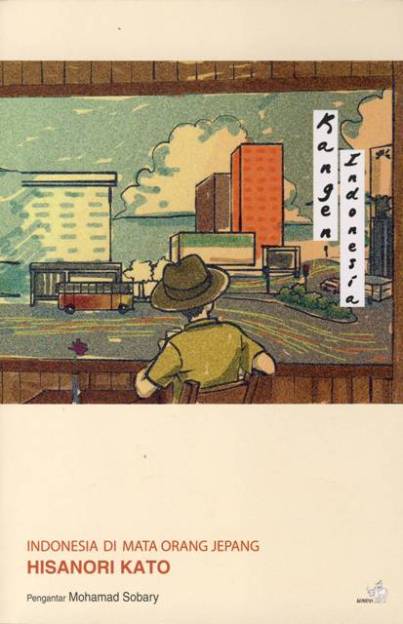Pradana Boy ZTF, Singapore
In commemorating its centennial anniversary November this year, Muhammadiyah, the second largest Islamic organization in Indonesia, is organizing an International Research Conference on Muhammadiyah, or IRCM, at Muhammadiyah University of Malang, East Java, from Nov. 29-Dec. 3. More than a dozen internationally reputable experts in Muhammadiyah studies will discuss, scrutinize, asses and analyze many aspects of Muhammadiyah’s movements, ranging from its religious stance, social achievements, education, to political dynamics. Among so many topics that are highly debated will be Muhammadiyah and radicalism.
It cannot be denied that the ascendance of Islamic radicalism in the post-New Order Indonesia has created a number of schools of thought. Among them is the association of Islamic radicalism with modernist and puritan Islamic groups, including Muhammadiyah. One main reason for this attribution is the fact that some main players of radicalism in Indonesia are connected to Muhammadiyah, including, 2002 Bali bombers Amrozi, Mukhlas and Ali Imron, being the most popularly cited examples.
In responding to this fact, two opposing views emerged. On the one hand, some observers and scholars, such as Nahdlatul Ulama (NU) chairman Said Agil Siradj, have exaggerated the fact and jumped into the conclusion that Muhammadiyah is a “producer” of radicals. Muhammadiyah’s inner circles, on the other hand, are defensive by stating that the association is non-sense and is politically motivated. However, both views are not based on a rigorous assessment and mostly motivated by prejudices and a shallow understanding of the complex dynamic of Muhammadiyah, on the part of observers; and by exclusive-mindedness and fanaticism, on the part of Muhammadiyah activists.
Based on my research, which took the case of emerging radicalism in predominantly Muhammadiyah region of Lamongan, East Java, it can be concluded that basically Muhammadiyah has made an indirect contribution to the emergence of radicalism among the youth. The contribution can be described in the following points.
In terms of religious doctrine, Muhammadiyah shares certain fundamental traits with radical Islamic groups. Those intersections are their attitude toward the Scripture, local cultures and traditions. Theoretically, Muslims’ attitude toward the interpretation of the Koran can be broadly identified in terms of literalist, semi-literalist and
progressive.
While the founder of Muhammadiyah took a progressive approach in interpreting the Koran, most Muhammadiyah members in the current context adopt the second approach, while it is academically accepted that the second approach is also followed by most radicals, most notably their ideologues such as Sayyid Qutb and Abul A’la al-Mawdudi.
For the lack of a better term, I refer to this intersection as the “elementary relationship” of Muhammadiyah and radicalism. At this stage of the interplay, Muhammadiyah’s doctrine of puritanism has a minor but determining role in spreading the seeds of radicalism among certain activists. However, those seeds developed and advanced not in Muhammadiyah milieu, but outside Muhammadiyah. The case of Ali Imron and Amrozi evidence of this.
In his memoir, Imron (2007) acknowledged that the seeds of radicalism were firstly planted in him when he was educated at a Muhammadiyah boarding school in his hometown Lamongan. However, the seeds did not grow into fertile plants until he was involved in jihad training in Afghanistan, a path paved by his brother, Mukhlas, who was running an Islamic boarding school in Johor, Malaysia.
Interestingly, those who have transformed into radical activists although previously connected to Muhammadiyah, have now separated from it on the basis that it is less radical and not in line with radicals’ agenda of the Islamization of society. The dispute between Mukhlas and his brother Khozin, who is currently a Muhammadiyah member, is a clear example. When Mukhlas transformed into a radical, he often warned Khozin not to maintain his association with Muhammadiyah, since in Mukhlas’ view being involved in Muhammadiyah would bring no benefits.
The next type of relationship between radicalism and Muhammadiyah is what I term as the “return-for-salvation” stage. At this stage, the established radicals now return to Muhammadiyah not to rejoin the organization but come with a claim to save it from elements, doctrines, beliefs and practices that they perceive as un-Islamic, on the one hand; and to persuade Muhammadiyah youths to join radical fronts, on the other.
In many cases, those who previously studied in Muhammadiyah educational institutions now dare to openly challenge and question Muhammadiyah local leaders’ positions on certain Islamic topics. Although those radicals are aggressively approaching Muhammadiyah youths, it is interesting to note that Muhammadiyah youths are different in responding to radical calls: those who accept the calls and those who critically reject them.
The former group is generally those who are experiencing the crisis of identity that, as in the Lamongan case, is caused by the exclusive attitude of most Muhammadiyah local leaders. This attitude has furthermore led them to be deterministic in identifying what thoughts and practices are in line with Muhammadiyah and which are not. Consequently, this attitude has also contributed to the emergence of new radicals among the youth.
For its 100th anniversary, therefore, it is important for Muhammadiyah to reassess its religious doctrines, reformulate it reform attitudes, as well as revisit its leaders’ attitude toward differences, especially in dealing with the youth who are experiencing crisis of identity and “religious openings” and “cognitive seeking.”
If Muhammadiyah local leaders do not change their deterministic attitude, in the long run, Muhammadiyah will be no more interesting for the youth and they will switch their preference to radical Islamic groups. When this happens, it is hard to deny that Muhammadiyah is actually playing its role in strengthening Islamic radicalism.
The writer is an activist of Muhammadiyah Young Intellectual Network (JIMM) and is pursuing a PhD at National University of Singapore.


